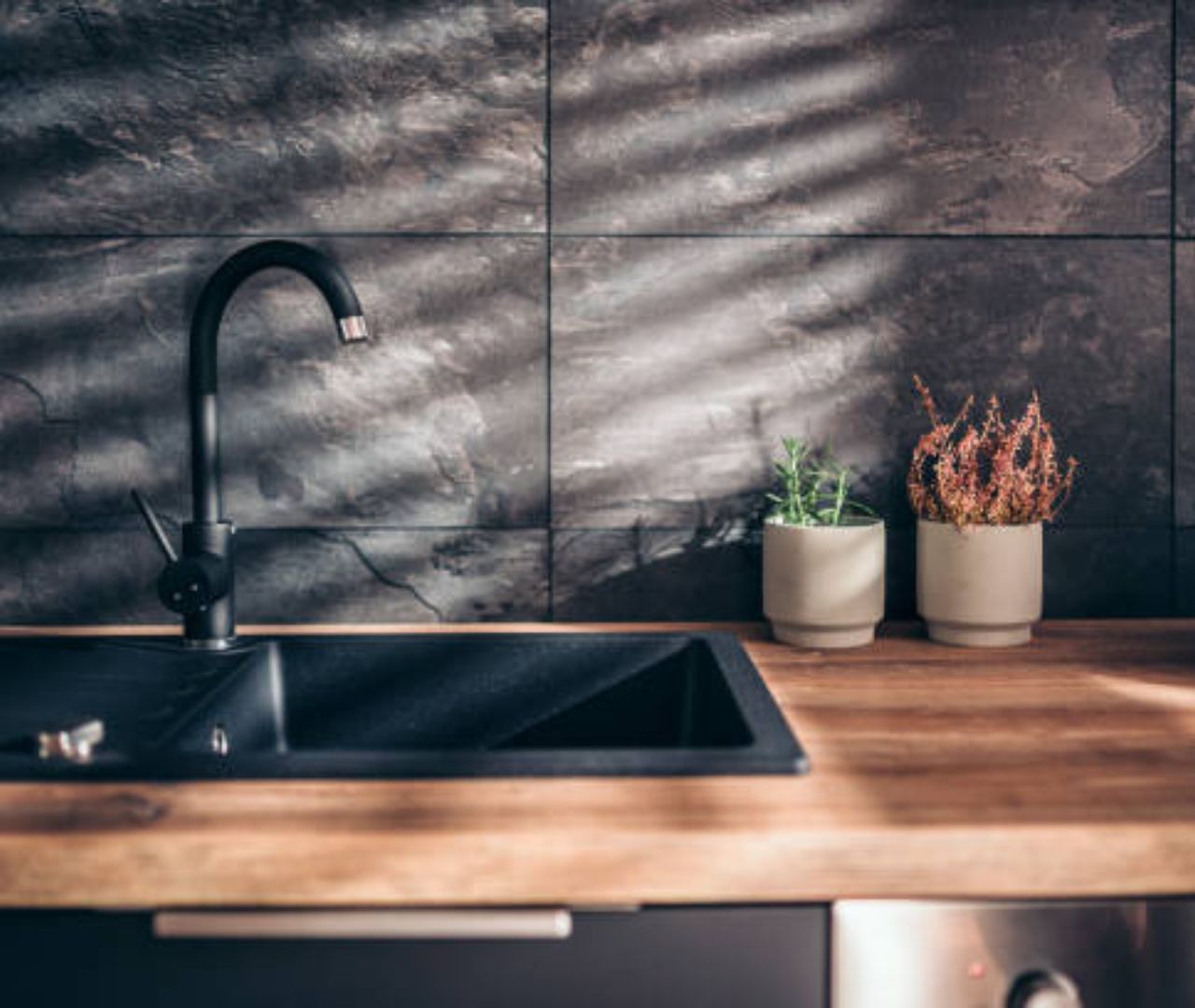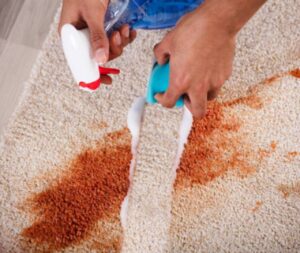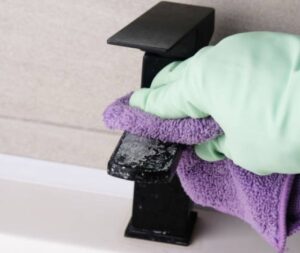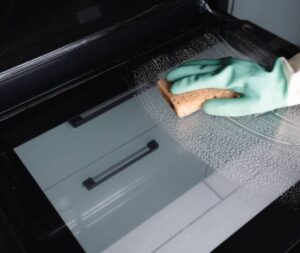black faucets are stunning. They’re the quiet showstoppers in any modern bathroom or kitchen. That matte or glossy finish screams style, class, and Pinterest perfection. But keeping them actually looking that way? Yeah… that’s a different story.
One minute your faucet looks like it belongs in a magazine. The next, it’s covered in water spots, fingerprints, and soap scum—like it’s been personally attacked by hard water. Been there. Done that. Got the streaks to prove it.
If you’ve been wondering how to clean black faucets without scratching, fading, or losing that sleek finish, buckle up. I’ve tried it all—DIY hacks, overpriced “miracle” sprays, and even some old-school tricks from my grandma (spoiler: one of them actually works).
So grab a soft cloth and maybe your favorite cleaning playlist, because we’re about to get those black beauties shining again—no streaks, no drama.
Why Black Faucets Need Special Care
Here’s the thing: black faucets aren’t like your regular chrome ones. Their finish—whether matte or glossy—is more sensitive to harsh chemicals and abrasive materials.
The good news? They don’t require fancy cleaners or complicated routines. The bad news? They’re a magnet for water spots, dust, and oily fingerprints (seriously, it’s like they have a grudge against cleanliness).
Most black faucets are finished with either:
- Matte powder coating (smooth, non-reflective, and prone to streaking if cleaned wrong), or
- Electroplated gloss coating (shinier and a little tougher, but still delicate).
So yeah, treating them like a stainless-steel sink is basically faucet sabotage.
What You’ll Need (Keep It Simple, Friend)
Before you go full cleaning mode, here’s your short and sweet supply list:
- Microfiber cloths (at least two—one for cleaning, one for drying)
- Mild dish soap (nothing fancy, just gentle)
- Warm water
- White vinegar (for hard water stains)
- Spray bottle (optional but makes life easier)
- Soft toothbrush (for those tiny crevices that love grime)
That’s it. Seriously. No expensive “black faucet cleaners” or harsh chemicals that sound like they came out of a science lab.
Step-by-Step: How to Clean Black Faucets Like a Pro
Step 1: Start with a Gentle Wipe-Down
Grab your microfiber cloth, dampen it with warm water, and gently wipe the faucet. This removes the surface dust and grime.
Don’t go rubbing like you’re scrubbing burnt rice off a pan—be gentle. The finish is delicate, and too much friction can create shiny spots on a matte faucet (and not in a good way).
Pro tip: Always use a microfiber cloth. Paper towels or kitchen rags can leave lint or even scratch the surface.
Step 2: Mix a Simple Cleaning Solution
In a small bowl (or your spray bottle), mix:
- 1 cup of warm water
- A few drops of mild dish soap
Swirl it a bit. That’s your DIY cleaner—cheap, effective, and faucet-friendly.
Spray or dip your cloth in the mix and wipe down the faucet again. This helps lift off oils and residue that water alone won’t remove.
Step 3: Handle Hard Water Stains (The Sneaky Culprit)
Now for the annoying part—those chalky white spots. They’re usually caused by mineral buildup from hard water, and no, they don’t just “wipe off.”
Mix equal parts white vinegar and water in a spray bottle. Lightly mist the stained areas and let it sit for about five minutes.
Then wipe it off with your cloth.
If the stains are still being stubborn, gently scrub the area with a soft toothbrush (emphasis on soft, okay?).
Important: If your faucet has a matte finish, don’t let vinegar sit too long. It’s acidic, and while it works wonders, leaving it too long can dull the surface.
Step 4: Rinse and Dry (The Secret to No Streaks)
After cleaning, rinse your faucet with clean water or wipe it down with a cloth dampened with plain water. Then—and this is key—dry it immediately with your second microfiber cloth.
This is the magic move that separates “meh” results from “wow.” Drying removes leftover moisture that can cause water spots.
Think of it like drying your hair after a shower—you skip it, you regret it.
Step 5: Add Some Shine (Optional But Worth It)
If your faucet is glossy, you can buff it with a dry microfiber cloth for that smooth, showroom finish.
For matte black faucets, skip the shine sprays. Instead, lightly rub a tiny amount of baby oil or olive oil on a cloth and buff it in gentle circles. This adds a subtle protective layer and helps repel water spots (plus it makes your faucet smell nice—bonus!).
What NOT to Do
Alright, let’s talk about some cleaning crimes I’ve personally committed so you don’t have to:
- ❌ No abrasive sponges or scrubbing pads. They’ll scratch faster than you can say “oops.”
- ❌ No bleach, ammonia, or strong chemical cleaners. They’ll strip the finish and ruin the color.
- ❌ No leaving vinegar or soapy water to dry naturally. It causes streaks, stains, and sometimes weird blotches.
- ❌ No rough towels or paper towels. Lint and scratches are not a good look.
Basically, if it sounds harsh or feels rough, keep it far, far away from your faucet.
Weekly Maintenance: The Lazy (But Smart) Way
Want to keep your faucet looking fresh without deep-cleaning every other day? Here’s my lazy-but-effective routine:
- Every 2–3 days: Wipe with a dry microfiber cloth. Takes 20 seconds, tops.
- Once a week: Clean with mild soap and water, then dry.
- Once a month: Do a vinegar treatment for hard water stains.
That’s it. Easy, right? Consistency beats intensity here. Regular light cleaning prevents buildup, so you won’t have to spend your Saturday night scrubbing like you’re in a cleaning commercial.
Quick Fixes for Common Problems
1. Fingerprints (Because Apparently, We Can’t Stop Touching)
Use a slightly damp cloth with a drop of dish soap. Wipe gently, then dry.
Or—if you’re in a hurry—a baby wipe actually works surprisingly well.
2. Soap Scum
Mix one part vinegar and two parts water, spray it on, wait a few minutes, then wipe off. Follow with a rinse and dry.
3. Dull Finish
Rub a drop of mineral oil or baby oil with a cloth, buff gently, and admire your work.
DIY Natural Cleaner Recipes
If you’re into eco-friendly cleaning, these are simple and effective options:
- Citrus Spray: Mix 1 cup vinegar, 1 cup water, and a few drops of lemon essential oil.
- Baking Soda Paste: For super stubborn spots, mix baking soda and water into a paste, dab it gently on the area, and rinse. (Don’t use this often, though—it’s slightly abrasive.)
Both options smell great and keep your faucet chemical-free.
A Quick Word on Hard Water
If your faucet constantly ends up spotted, the real enemy might be your water. Hard water leaves mineral deposits that cling to dark surfaces.
Quick fix: Install a small water filter on your faucet or under your sink. It reduces mineral content and keeps your black fixtures spotless longer.
It’s a bit of an investment, but IMO, it’s worth it. Fewer spots, less cleaning, more time to scroll Pinterest for kitchen inspo.
Frequently Asked (and Totally Relatable) Questions
Can I use glass cleaner on black faucets?
Nope. Most glass cleaners contain ammonia, and that’s a hard no for black finishes. It can cause discoloration or streaking.
Why does my black faucet look cloudy after cleaning?
You probably didn’t dry it fast enough. Remember—water + air = spots. Always dry immediately.
Can I use vinegar every day?
Not daily. Once or twice a month is enough. Overuse can wear down the protective coating.
Do matte black and glossy black faucets clean differently?
A little. Matte shows spots more easily, so it needs more frequent gentle wipes. Glossy is more forgiving but still hates harsh chemicals.
Final Thoughts
Cleaning black faucets isn’t rocket science—it’s just a balance of gentle cleaning and consistent care. The secret? Less is more.
Use soft materials, mild cleaners, and always dry immediately. That’s the entire magic formula. Once you get into the habit, your faucets will always look sleek, elegant, and lowkey brag-worthy.
So next time you catch a glimpse of your spotless black faucet, you can smile (and maybe flex a little). You earned that shine—no streaks, no drama.









